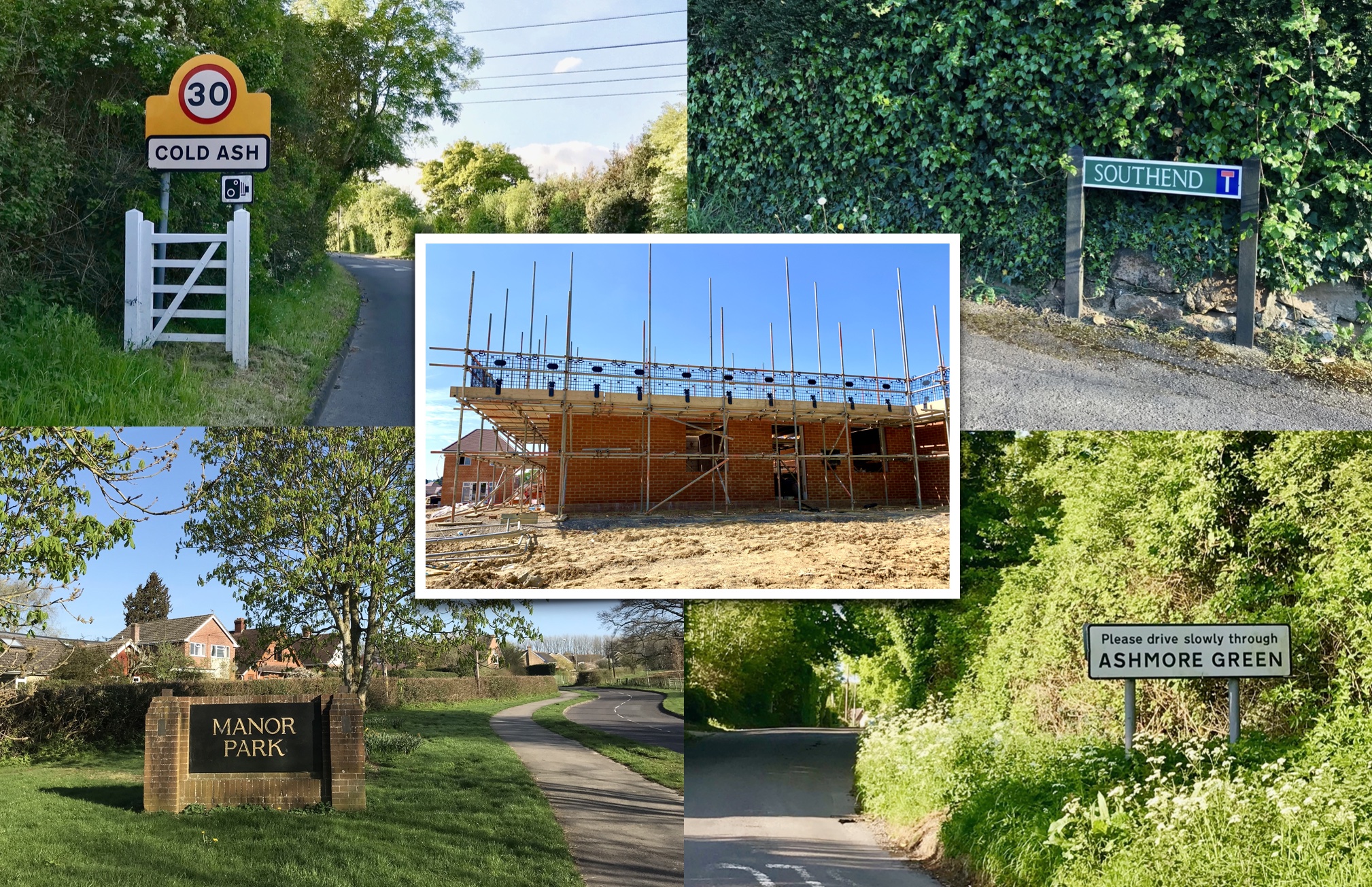
Village Design Statement
The Cold Ash and Ashmore Green Village Design Statement (VDS) was ratified in 2002. Many of you will be aware of this as it was ratified via a referendum. This update is for those of you who weren’t aware of it (I was one of you until I joined the Parish Council) and as a refresher for those who are aware of it.
DID YOU KNOW WE HAVE A VILLAGE DESIGN STATEMENT?
So, what is a VDS?
Wikipedia describes a VDS as….
Village design statement (VDS) is a term of English rural planning practice. A VDS is a document that describes the distinctive characteristics of the locality and provides design guidance to influence future development and improve the physical qualities of the area.
The VDS contains planning guidelines in the areas of Landscape, wildlife, Public Rights of Way, community facilities and amenities, transport, housing and economic development.
The VDS forms an informal agreement between the parishioners and West Berkshire Council, having been both approved by West Berkshire Council and ratified by parishioners, in a referendum. The VDS is, therefore, central to any deliberations on planning applications within Cold Ash Parish Council, who use it, as it represents parishioner aims and desires.
Examples of the sort of guidelines covered within the VDS are:
- ‘Any future development should seek to ensure that the bio-diversity of the parish is conserved and enhanced. Opportunities should be sought to contribute towards local biodiversity action plan initiatives’
- ‘In any new development, mature trees and hedgerows should be retained. If the developer can show that trees need to be felled, they should replant with native species of local provenance’
- ‘In any development, whether for new or extended buildings, entrance driveways should be designed to ensure safe road access’
These and other guidelines have been successful used recently in challenging inappropriate planning applications.
Is the VDS still current?
This has been challenged recently by a District Councillor, when deliberating on a planning application. The view expressed was that, ‘the VDS is 18 years old and is out of date’. The good news is that this was not the view of the majority of District Councillors; the planning application was rejected on the basis that it went against a number of the guidelines in our VDS.
The importance of the VDS is further supported by WBC statement on VDSs: ‘Once adopted by the council they are used to inform and support the policies contained within the Local Plan and can be material considerations in the determination of planning applications’. This position was ratified by the fact that all VDSs in West Berkshire have been carried forward and included in the most recent Local Area Plan.
The VDS was already being used to form the basis for the evolving Neighbourhood Development Plan but, in response to the challenge, a review of the VDS was undertaken by the NDP Steering Group and it was ascertained that the vast majority of the guidelines are still as valid today as the day they were written. Of the 41 guidelines in the VDS, the breakdown of our assessment was:
The guidelines that are still relevant: 36 (88%)
The guidelines that need to be reviewed: 5 (12%)
The guidelines that are no longer relevant: 0 (0%)
Whilst this provides a level of protection, the VDS only provides guidelines, so it’s important that we proceed with the NDP, which will be a formal level of governance.
So, in essence, the VDS is still current, but the longer it remains unaltered, the greater the risk that the guidance contained within it will be open to challenge. This is why it’s essential that we push on with drafting our NDP.
So, what is the relationship between the VDS and NDP?
The NDP is a product of the Localism Act 2011, which is aimed at enabling certain planning decisions to be made at the local level; that is, the policies in an NDP take precedence over non-strategic policies in WBC’s Local Plan. There is a limit to the nature of the policies we are able to make, as they need to align with the strategic policies at other levels of government. However, having an agreed NDP will give us more control over what happens, from a planning perspective, in the parish.
So, whilst the VDS is an informal agreement between parishioners and WBC which only provides guidance from the local level, an NDP would be a formal agreement, giving Cold Ash Parish Council a level of influence over decision making, such as where new homes are built and the nature of developments.
The expectation is that the NDP will contain policies that align to the guidelines in the VDS, as they are all either still valid or only need a minor refresh.
Where are we with development of our NDP?
The first draft of the document is currently underway. Once it is available, it will be shared more widely within the parish in order to get input from you, our parishioners.
Once we have a document that we are happy reflects the views and desires of parishioners, it will be submitted to WBC for examination. If approved, the final document will be put to a referendum of parishioners and, if accepted, will come into force.
There are many other steps, reviews and assessments to be done before the NDP can be produced and ratified, but this is the essence of what we’re trying to achieve.
What can I do now if I want to learn more?
A good starting point is the VDS, as it provides a good insight into the sort of things the NDP will cover. A copy of the VDS is available on the Cold Ash Parish Council website and can be accessed via this link https://coldashpc.org.uk/the-council/planning/village-design-statement/
Also, if you would like to get involved in developing the NDP and/or the work required to get it accepted, please contacted the Parish Council.
Ivor McArdle
Cold Ash NDP Communications Lead
